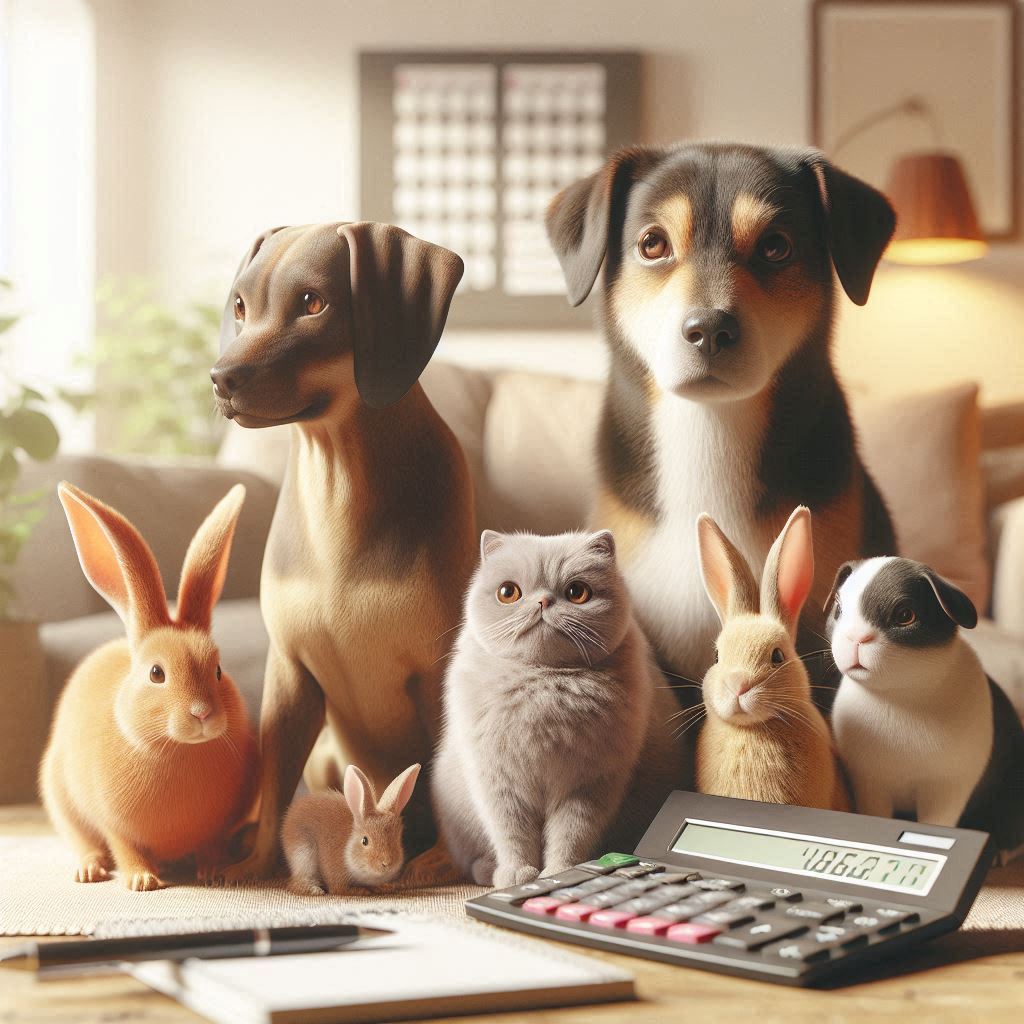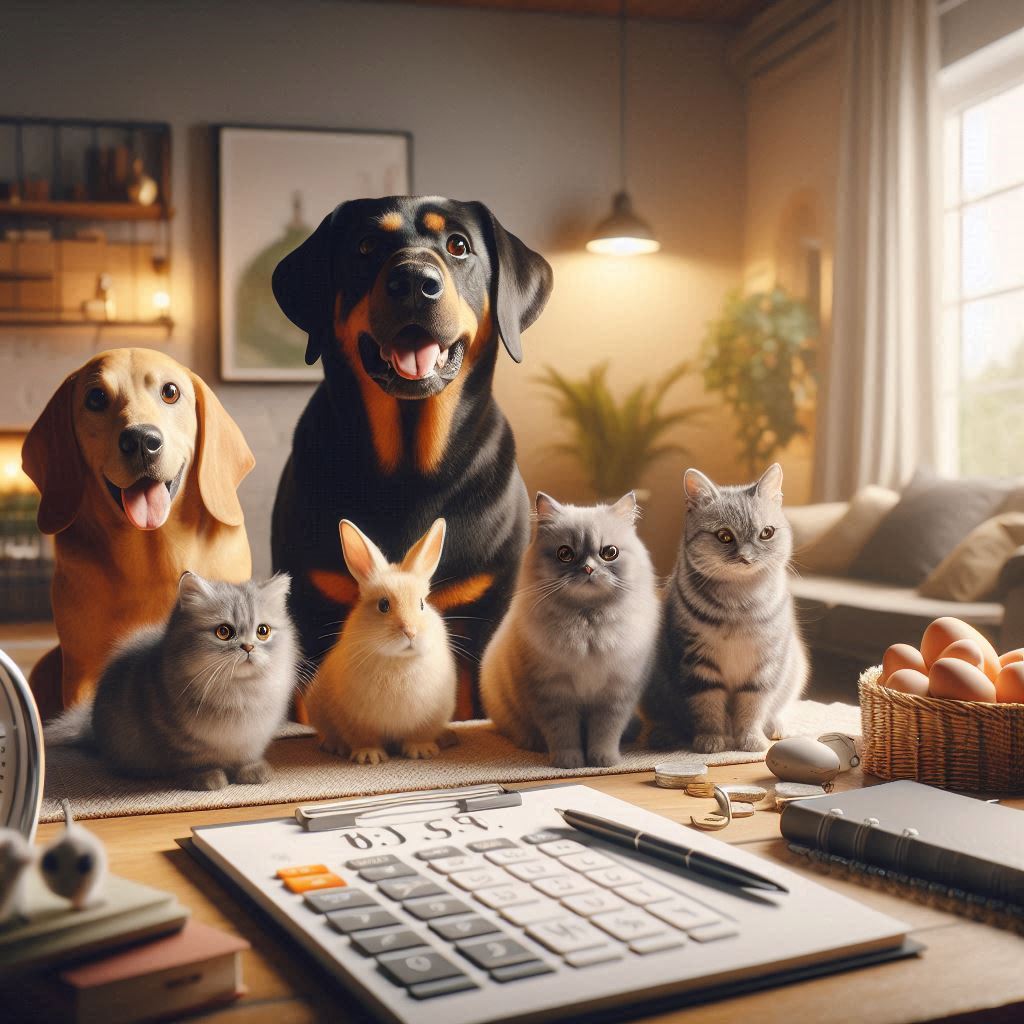Pet Food Calculator
Determine the optimal daily food intake for your pet based on their species, weight, age, activity level, and diet type.
Results
Daily Calorie Requirement: calories per day.
Portion Size: grams per day.
Additional Tips:
- Monitor your pet's weight and body condition regularly.
- Adjust food portions as needed to maintain a healthy weight.
- Consult a veterinarian for personalized advice, especially for pets with special dietary needs or health conditions.
Feeding your pet the right amount of food is crucial for their health, happiness, and longevity. However, determining the optimal daily food intake can be confusing due to factors like species, weight, age, activity level, and diet type. To simplify this process, we’ve created the Pet Food Calculator, a tool designed to help you calculate your pet’s daily calorie needs and portion sizes accurately.
In this blog, we’ll explore everything you need to know about the Pet Food Calculator, including its features, the science behind it, and how to use it effectively.
Why Use a Pet Food Calculator?
Feeding your pet too much or too little can lead to serious health issues such as obesity, malnutrition, or even chronic diseases. A Pet Food Calculator ensures that your furry friend gets the right balance of nutrients based on their unique needs. Here are some reasons why this tool is essential:
- Prevents Overfeeding: Helps avoid obesity-related health problems.
- Ensures Proper Nutrition: Tailors food portions to your pet’s specific requirements.
- Saves Money: Prevents wastage by calculating exact portion sizes.
- Easy to Use: Provides quick results with minimal effort.
How Does the Pet Food Calculator Work?
The Pet Food Calculator uses a combination of scientific formulas and user inputs to determine your pet’s daily calorie requirement and portion size. Below, we break down the key components of the calculator.
Key Inputs
To calculate your pet’s food requirements, you need to provide the following details:
- Pet Species: Dogs and cats have different metabolic rates and nutritional needs.
- Weight (kg): Body weight directly affects calorie requirements.
- Age Category: Puppies/kittens, adults, and seniors have varying energy needs.
- Activity Level: Sedentary pets require fewer calories than active ones.
- Diet Type: Dry food, wet food, raw diets, and mixed diets have different energy densities.
The Science Behind the Calculator
The calculator uses established veterinary guidelines to estimate calorie needs:
- Base Calorie Requirement: Calculated using species-specific formulas. For example:
- Dogs:
100 kcal per kg of body weight(adults). - Cats:
120 kcal per kg of body weight(adults). - Activity Multipliers: Adjust calorie needs based on activity levels:
- Sedentary:
1.0x - Moderately Active:
1.2x - Active:
1.4x - Extremely Active:
1.6x - Energy Density of Food: Determines portion size based on the type of food:
- Dry Food:
400 kcal per 100g - Wet Food:
150 kcal per 100g - Raw Diet:
250 kcal per 100g - Mixed Diet:
300 kcal per 100g
Benefits of Using the Pet Food Calculator
Here are the top benefits of incorporating this tool into your pet care routine:
Key Points
- Personalized Nutrition: Tailor food portions to your pet’s unique needs.
- Health Monitoring: Regularly assess weight and adjust portions to maintain a healthy body condition.
- Veterinary Support: Provides a starting point for discussions with your vet about dietary changes.
- Convenience: Eliminates guesswork and saves time.


Understanding Pet Nutrition Through Charts and Tables
Visual aids like charts and tables can make understanding pet nutrition easier. Below, we present some useful data to help you grasp the science behind feeding your pet.
Table: Base Calorie Requirements by Species and Age
| Species | Age Category | Calories per kg |
|---|---|---|
| Dog | Puppy/Kitten (<6 mo) | 130 kcal |
| Dog | Adult (6 mo–7 yrs) | 100 kcal |
| Dog | Senior (>7 yrs) | 80 kcal |
| Cat | Kitten (<6 mo) | 150 kcal |
| Cat | Adult (6 mo–7 yrs) | 120 kcal |
| Cat | Senior (>7 yrs) | 100 kcal |
Chart: Activity Multipliers
Activity Level Multiplier
----------------------- ----------
Sedentary 1.0x
Moderately Active 1.2x
Active 1.4x
Extremely Active 1.6xChart: Energy Density of Different Diets
Diet Type Calories per 100g
----------------------- -----------------
Dry Food 400 kcal
Wet Food 150 kcal
Raw Diet 250 kcal
Mixed Diet 300 kcalExample Calculation
Let’s walk through an example to see how the calculator works in practice.
Scenario
- Species: Dog
- Weight: 10 kg
- Age: Adult
- Activity Level: Active
- Diet Type: Dry Food
Step-by-Step Calculation
- Base Calorie Requirement:
100 kcal/kg * 10 kg = 1000 kcal - Adjusted Calorie Requirement:
1000 kcal * 1.4 (active multiplier) = 1400 kcal - Portion Size:
(1400 kcal / 400 kcal per 100g) * 100 = 350 grams
Result
Your dog requires approximately 1400 calories per day, which translates to 350 grams of dry food daily.
Additional Tips for Feeding Your Pet
While the Pet Food Calculator provides a great starting point, here are some additional tips to ensure your pet stays healthy:
- Monitor Weight Regularly: Keep an eye on your pet’s body condition score (BCS) and adjust portions accordingly.
- Consult a Veterinarian: If your pet has special dietary needs or health conditions, seek professional advice.
- Avoid Over-Treating: Treats should not exceed 10% of your pet’s daily calorie intake.
- Provide Fresh Water: Always ensure your pet has access to clean drinking water.
Conclusion
The Pet Food Calculator is a powerful tool that simplifies the process of determining your pet’s daily food requirements. By considering factors like species, weight, age, activity level, and diet type, it ensures your pet receives balanced nutrition tailored to their needs.
Remember, while this calculator provides general guidelines, every pet is unique. Regular monitoring and consultation with a veterinarian are essential for maintaining your pet’s health. Start using the Pet Food Calculator today and take the first step toward better pet care!





